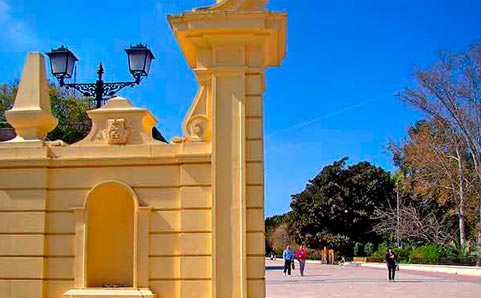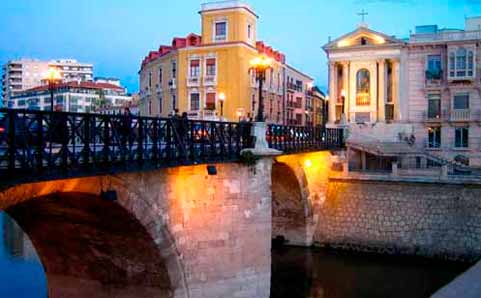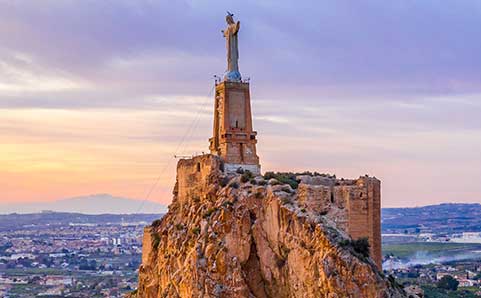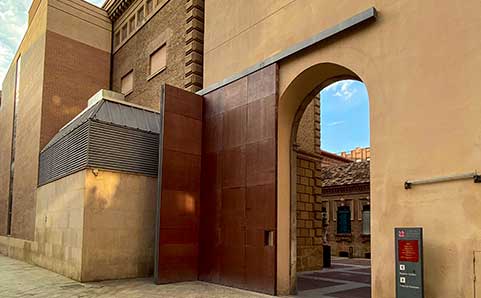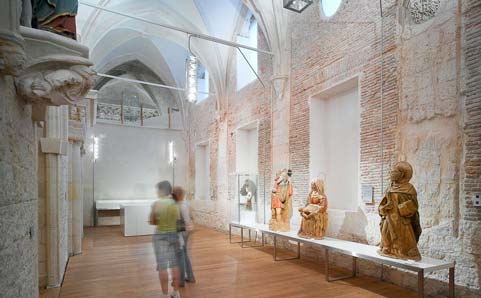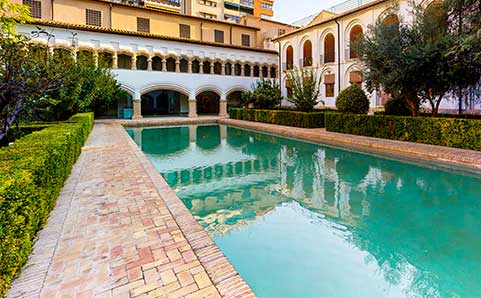Route from the City Museum to the Almudí
Cultural visit with stop on several museums such as Ramón Gaya and the Almudí Palace, of the seventeenth century, ending near the Bridge of Dangers. This route suggests the visit of four buildings highlighted for their architecture and currently converted into centers where you can enjoy various cultural events.
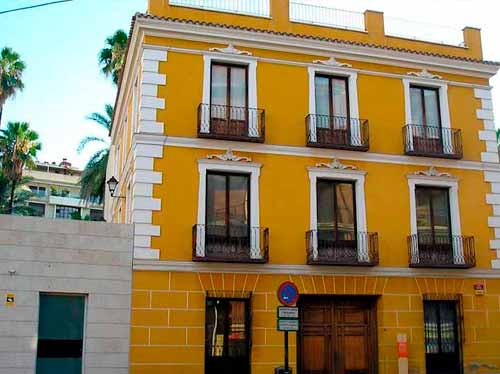
1
City Museum: XVI century.
The City Museum is situated in a privileged location next to the Convent of the Augustinian Nuns, the Bullfighting Museum, the Salzillo Museum and the Regional Centre for Crafts, it dates from the 16th century and is the former home of the López Ferrer family. The original building was commissioned by Mr. Gil Rodríguez de Junterón, Pronotary of Pope Julius II and Archdeacon of Lorca. It has an orchard of Hispano-Muslim origin and still conserves the old carriage entrance. The main objectives of the Museum are the dissemination and diffusion of the cultural heritage of Murcia, through a journey through history, tangible and intangible heritage, art, crafts and ethnography in its most varied manifestations.
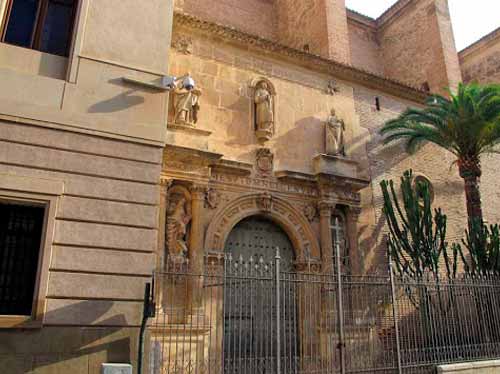
2
San Esteban Church: XVII century.
Made in the seventeenth century, it is the temple of the St. Stephen's Mission established by Jesuits. The front was built between 1557 and 1570 and responds to the " triumphal arch" scheme, on which the sculptures of San Ignacio and San Francisco Javier were installed at the end of the eighteenth century. Inside the tomb of Bishop Stephen of Almeyda is preserved, although visitors can no longer access to it. It is the processional main place of the Brotherhood of the Holy Christ of Mercy, which parades on the afternoon of Good Friday. Next to the church is the archaeological site of St. Esteban. The archaeological find corresponds fundamentally to the structure of the 13th century Islamic quarter and is currently in the process of excavation and definitive evaluation.
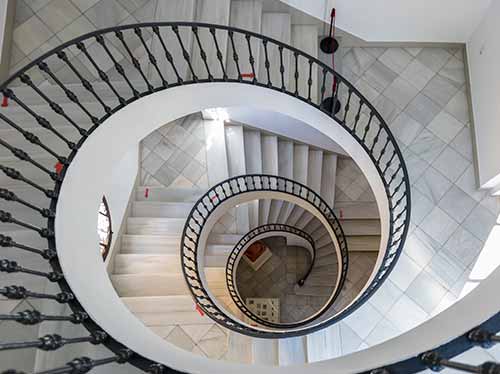
3
Ramón Gaya Museum: XIX century.
It was built in the nineteenth century and converted into an artist's museum in 1990 from the rehabilitation of the Palarea House. It consists of the union of two buildings that preserve the characteristic structure of the urban houses of the nineteenth century and located in one of the squares of greatest tradition of Murcia.The façade of the original building with its balconies, dove's nest grilles, bay window and the main staircase with its oculi on the outside have been preserved. Inside, you can take a look at the interesting artistic life of the painter and writer Ramón Gaya. Through the different rooms, we can find his early works, his later works of disenchantment with the avant-garde, or those that reflect his attachment to painters such as Velázquez, Titian, Rubens and Rembrandt.
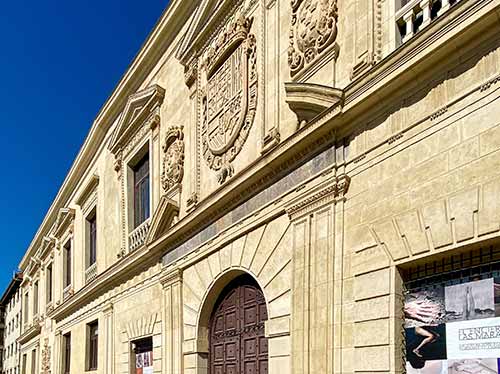
4
Almudí Palace: XVII century.
The Almudí Palace is a historic building located in the Plan of St. Francisco, very close to the Malecón promenade and the Bridge of Dangers. It was built at the beginning of the 17th century, between 1602 and 1628, and is attributed to Pedro Monte de la Isla. It was a public building used to store grain from the tithes, which is why it is also known as the wheat warehouse. It was restored in 1985 for the Municipal Archive and Art Centre. Inside, there is a grandiose hall with Tuscan columns that is currently used as an exhibition hall, and a canvas of the Arab wall of Murcia that serves as a load-bearing wall for the building itself, as the Almudí was built on top of this defensive construction.
